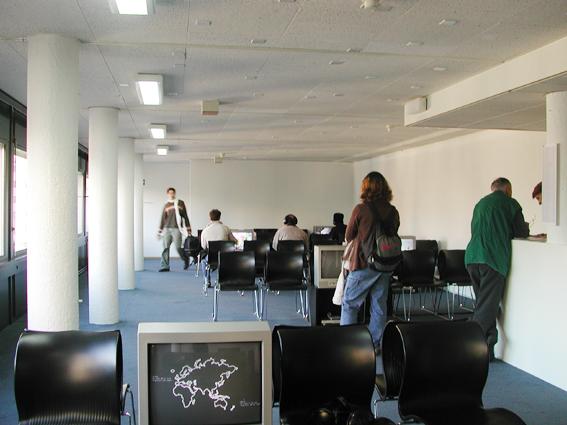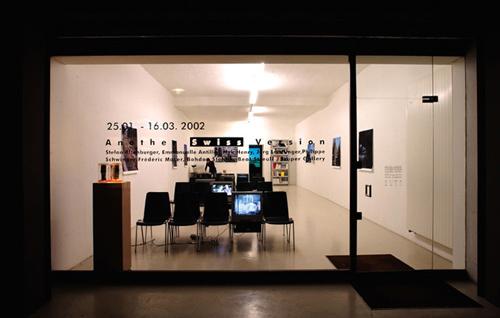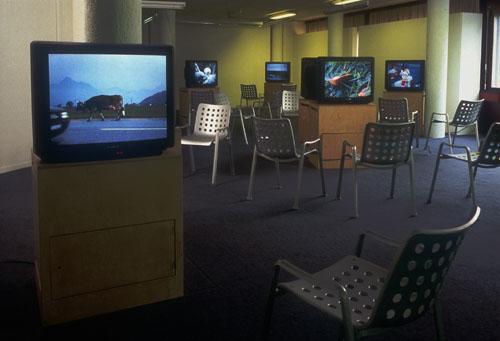| Lobbies_____media and video collection displays | |||
|
 If there are a large number of spaces specially dedicated to presenting videos, internet sites and multimedia projects, they are more often than not conceived as a dark side-room with a few monitors and chairs, or alternatively a space installed with high-tech design furniture. Thankfully, there are also a few rare media or video libraries that are conceived as real installations or group exhibitions, by artists and/or curators. Since the end of the 1980s, the structures put in place by Dan Graham, and later those by Johann Grimonprez, Fabrice Gygi or Stéphanie Moisdon, materialise this approach. They seek confrontations between the whole and the parts, architecture and furniture, video and its perception. A video library can dissimulate more than a hundred works for consideration. The environment, context, configuration, the programme’s concept and access to the projects, all have an influence on the perception, and thus the interpretation, of the works. To create such a space is to create a bridge between the individual and the collective and also between the immediate and the deferred. The same space gives the opportunity to see several things at the same time or consecutively. We can be watching one thing while thinking of others. A space with several monitors in the same room enables the spectators to exchange glances and share opinions. They are not necessarily looking in the same direction as with cinema or television: they are engaging in the same space, among the objects they are watching. The disturbances this situation can provoke link back to reality and to its public spaces; they can provoke a fruitful exchange of ideas and free thought. In fact, they are the very opposite of totalitarian space. For most of the Videolobbies, I wanted a space that was simultaneously constraining and open: constraining because the furniture is stationary and organised, open because the public can sit as they choose. The formal meets the friendly and informal. In the space of the Videolobby, rows of seats are placed alternatively back to back and face to face, in angles, with monitors alternatively placed on the walls, hanging from the ceiling or directly placed on some seats. Often there is a hostes or a counter in which to have drinks or select videos. The general display suggests a waiting room or an airport lounge. The reference to this sort of standardised space is, of course, not completely innocent. With the fear of attacks and the crisis in air travel, people’s presence is constantly controlled, their movements watched, their luggage searched. If they are there in the first place it is with the intention of going somewhere for leisure or business. These spaces are transitional, and when passing through them everything becomes a source of interest. Because one has to wait, the smallest activity and detail catches one’s attention. Thoughts circulate freely, by association, a little like at an exhibition. Reality is perceived differently.        Anticipation, Version 4.0, Centre pour l’Image Contemporaine, Geneva, Nov-Dec 1998 (Thomas Bayrle, Rachel Baker, Serge Comte, Renee Green, Mariko Mori, Matt Mullican, Elena Montesinos, Pierre Joseph, Jeffrey Shaw, Hubbard&Birchler, Peter Kogler)  |
||
|
|
|||

